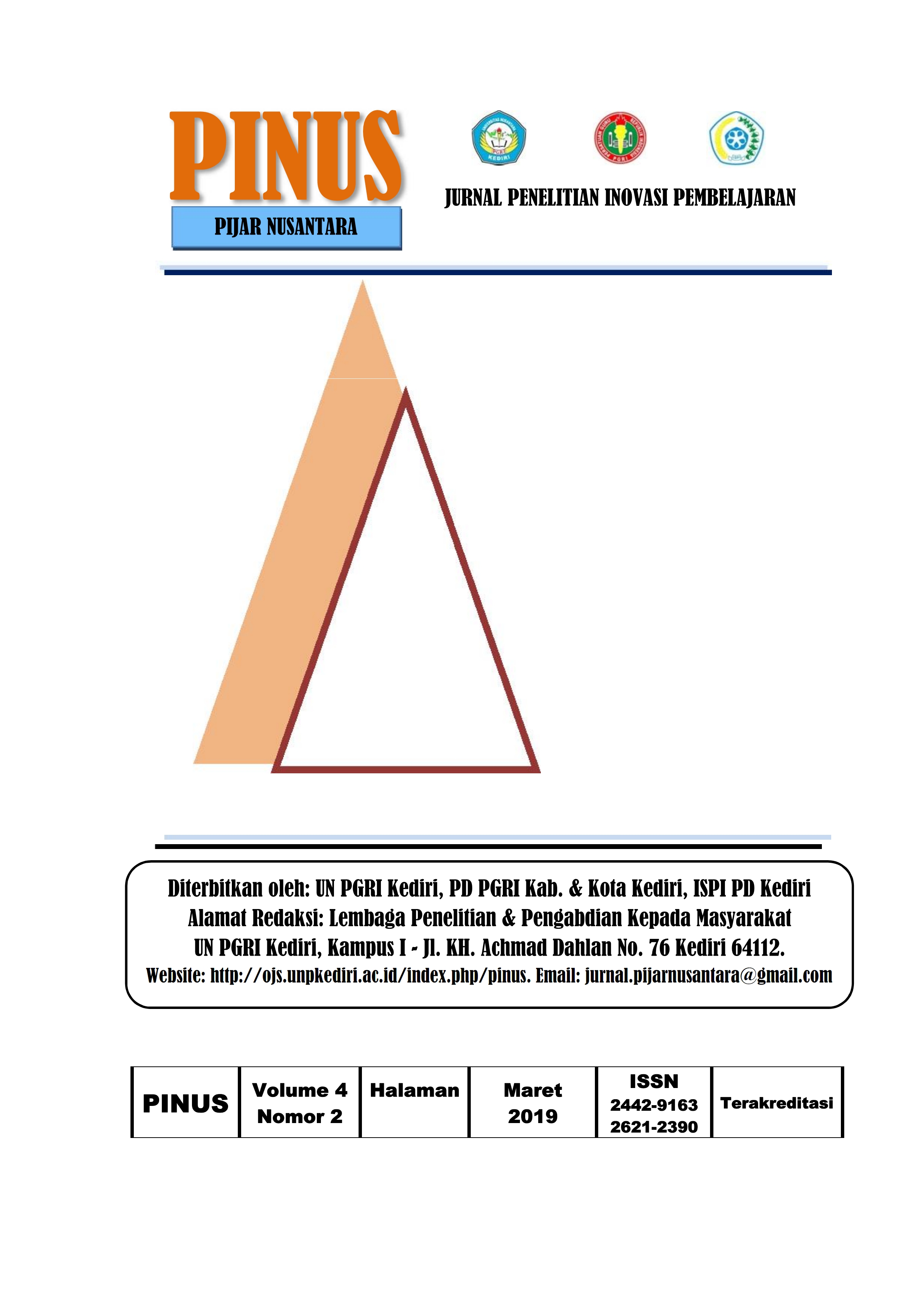Pemanfaatan Youtube untuk Meningkatkan Apresiasi Mahasiswa Terhadap Tari Nusantara Pada Mata Kuliah Konsep Dasar Seni Tari Prodi PGSD FKIP Universitas Bengkulu
DOI:
https://doi.org/10.29407/pn.v4i2.12618Keywords:
Youtube, Learning, Art, Archipelago Dance, AppreciationAbstract
This study aims to increase students' appreciation of the archipelago dance by utilizing youtube in learning Basic Concepts of Dance for VA semester students PGSD Study Program FKIP Bengkulu University. The research method used is action research conducted in two cycles. The data collection technique is observed using an appreciation observation sheet instrument. Data analysis using percentage analysis. In the first cycle, the observations of student appreciation of the archipelago dance in the observation step were 33.3% in the sufficient category and 66.7% in the good category, appreciation 66.7% in the sufficient category and 33.3% in the good category , appraisal / award 50% is insufficient category and 50% in good category, and empathy 66.7% is in the adequate category and 33.3% is in the good category. In the second cycle, the observations of student appreciation of the archipelago dance at the 50% observation step are in a good category and 50% are in the very good category, appreciation 33.3% is in a good category and 66.7% is in the very good category, assessment/award 16.7% were in good humor and 83.3% in the very good category, and empathy 33.3% were in the good category and 66.7% were in the very good category. Based on these data, it can be seen that the appreciation of students for archipelago dance by using youtube in learning the Basic Concepts of Dance is increasing.
Downloads
References
Arikunto, Suharsimi. 2010. Prosedur Penelitian Suatu Pendekatan Praktik. Jakarta: Rineka Cipta.
Asnawi, A. 2016. Persepsi Mahasiswa terhadap Pemanfaatan Youtube Dalam Pembelajaran Mata Kuliah Membaca. GERAM (Gerakan Aktif Menulis), 4(3), 11-22.Butterworth, Jo. (2012). Dance Studies: The Basics. New York: Routledge.
DeWitt, D., Alias, N., Siraj, S., Yaakub, M. Y., Ayob, J., & Ishak, R. 2013. The potential of Youtube for teaching and learning in the performing arts. Procedia-Social and Behavioral Sciences, 103, 1118-1126.
Gikas, J., & Grant, M. M. 2013. Mobile computing devices in higher education: Student perspectives on learning with cellphones, smartphones & social media. The Internet and Higher Education, 19, 18-26.
Hasnah. 2010. Pengetahuan Tari. Padangpanjang: PUSLIT & P2M ISI Padangpanjang.
Kurniasari, Nani., Irmayanti, Meiselina., & Arisanty, Melisa. (2015). Youtube, the Next TV Generatio: Netnography Studies of Commentary Box Features in Youtube. IndoICC – Communication & Collaboration: 128-149.
Leaning, M. 2017. Media and Information Literacy: An Integrated Approach for the 21st Century. Chandos Publishing.
Moghavvemi, S., Sulaiman, A., Jaafar, N. I., & Kasem, N. 2018. Social media as a complementary learning tool for teaching and learning: The case of youtube. The International Journal of Management Education, 16 (1), 37-42.
Mulyatiningsih, Endang. 2011. Metode Penelitian Terapan Bidang Pendidikan.Yogyakarta: Alfabeta.
Sekarningsih, Frahma & Rohayani, Heny. (2006). Kajian Lanjutan Pembelajaran Tari da Drama I. Bandung: UPI Press.
Sudarsono. Tari-tarian Indonesia I. Jakarta: Proyek Pengembangan Media Kebudayaan Direktorat Jenderal Kebudayaan, Departemen Pendidikan dan Kebudayaan.
Trianto. 2011. Panduan Lengkap Penelitian Tindakan Kelas. Jakarta: Prestasi Pustakaraya.
Yusri, Y., Rosida, A., Jufri, J., & Mantasiah, R. 2018. Efektivitas Penggunaan Media Youtube Berbasis Various Approaches dalam Meningkatkan Motivasi Belajar Bahasa Inggris. Eralingua: Jurnal Pendidikan Bahasa Asing dan Sastra, 2(2).
Downloads
Published
Issue
Section
License
Authors who publish with this journal agree to the following terms:
- Copyright on any article is retained by the author(s).
- The author grants the journal, right of first publication with the work simultaneously licensed under a Creative Commons Attribution License that allows others to share the work with an acknowledgment of the work’s authorship and initial publication in this journal.
- Authors are able to enter into separate, additional contractual arrangements for the non-exclusive distribution of the journal’s published version of the work (e.g., post it to an institutional repository or publish it in a book), with an acknowledgment of its initial publication in this journal.
- Authors are permitted and encouraged to post their work online (e.g., in institutional repositories or on their website) prior to and during the submission process, as it can lead to productive exchanges, as well as earlier and greater citation of published work.
- The article and any associated published material is distributed under the Creative Commons Attribution-ShareAlike 4.0 International License









